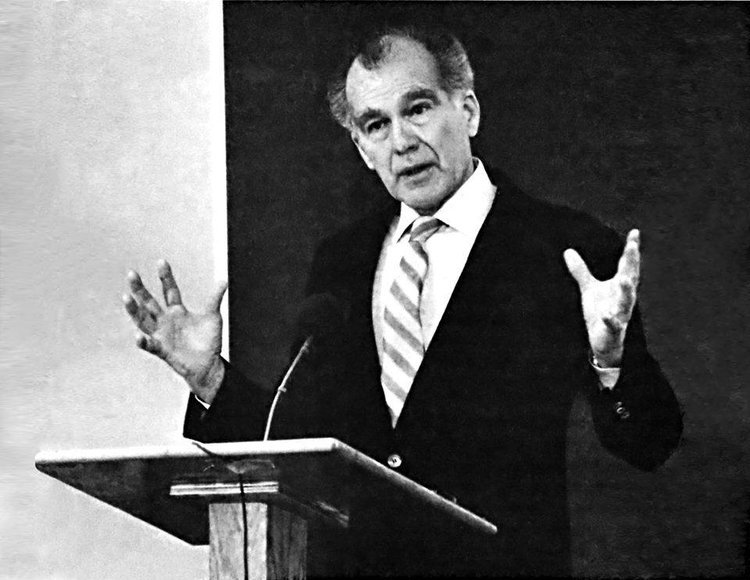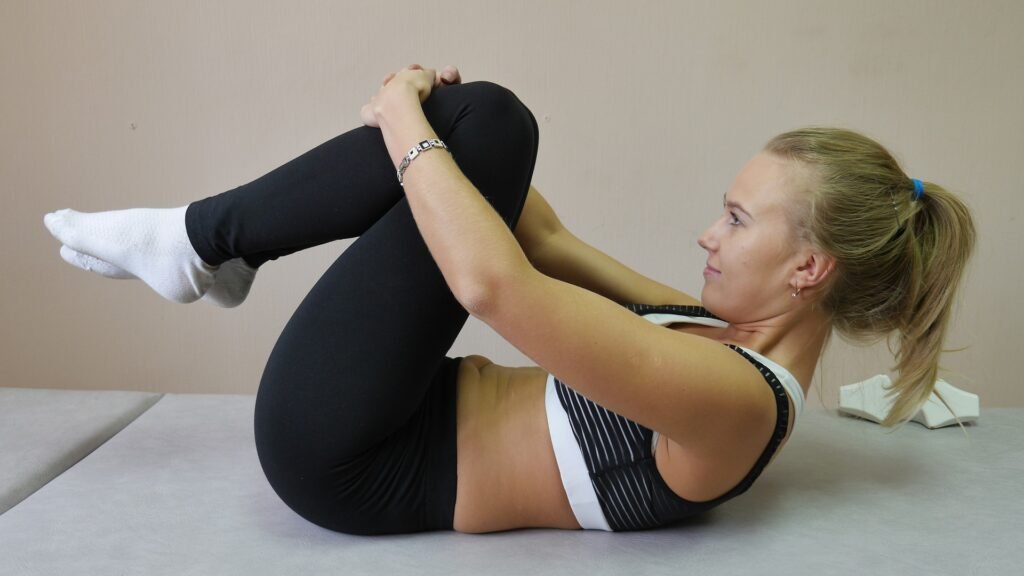1. Introduction – What Is Somatics ?
Somatics, often referred to as somatic therapy or somatic movement, explores the intricate connection between the mind and the body.
It revolves around the idea that our physical sensations, movements, and posture are deeply intertwined with our emotional and psychological states.
In simpler terms, somatics is about tuning into the signals that our body sends us and using that awareness to foster healing, release tension, and enhance overall well-being.

image: Thomas Hanna – associationforhannasomaticeducation.com
The concept of somatics was first coined by Thomas Hanna in 1970. It encompasses a range of techniques aimed at increasing bodily awareness through mindful movement and relaxation.
While somatics has gained popularity in recent decades, its roots trace back to ancient Eastern philosophies and healing practices like tai chi and qi gong.
These practices emphasize internal physical perception and experience, viewing the body not just as a physical entity but as a dynamic vessel of sensations and emotions.
Historically, somatics has been influenced by various movements, including the 19th-century physical culture movement, which integrated practices related to physical training, medical treatment, and dance.
Over time, figures such as Genevieve Stebbins and Elsa Gindler contributed to the development of somatic techniques, paving the way for later pioneers like Frederick Matthias Alexander, Moshe Feldenkrais, and Ida Rolf.
Throughout the 20th century, these pioneers and their successors codified and expanded somatic practices, integrating them into fields like dance, psychotherapy, and education.
In the 1970s, Thomas Hanna introduced the term “somatics” to encapsulate these diverse experiential practices collectively.
Today, somatics continues to evolve, with practitioners drawing from various lineages to create unique approaches tailored to individual needs.
It has expanded into realms like occupational therapy, clinical psychology, and education, demonstrating its versatility and effectiveness across different domains.
In essence, somatics offers a holistic approach to wellness, empowering individuals to explore the connection with their bodies, alleviate pain and discomfort, and cultivate a greater sense of presence and vitality in their lives.
Through somatic practices, individuals can tap into the inherent wisdom and potential within their own bodies.
2. What Are Somatic Exercises ?
Somatic exercises involve engaging in intentional movement with a focus on inner awareness and bodily sensations.
Rather than simply performing physical motions, these exercises emphasize expanding internal consciousness while moving.
Examples of Somatic Exercises
- Body-Mind Centering: Utilizes movement, touch, and mindfulness to re-pattern body-emotion relationships.
- Alexander Technique: Addresses the impact of stress and trauma on the body through mindfulness and body awareness exercises.
- Feldenkrais Method: Stimulates the brain through movement and body awareness, fostering flexibility and cognitive improvements.
- Laban Movement Analysis: A method to understand physical movement’s impact on emotion and cognition, widely used in various fields.

Image by arhy82 from Pixabay
Additionally, activities such as walking, dancing, yoga, Pilates, and aikido can also be considered somatic exercises.
These practices aim to enhance movement efficiency and replace outdated movement patterns and also integrate mind-body awareness and inward focus into movement.
Unlike traditional workouts focused on quantity, somatic exercises prioritize quality and awareness.
Each movement is an opportunity to deepen understanding of one’s body and movement patterns, fostering a holistic approach to physical activity.
The Benefits of Somatic Exercise
Somatic exercises offer a myriad of benefits beyond physical fitness.
They can enhance emotional awareness, providing a medium for expressing and processing difficult emotions through movement.
Thomas Hanna, a pioneer in somatics, emphasized its transformative potential in shaping our perception of mind-body connection and personal empowerment.

Image by Tumisu from Pixabay
Recent studies also show that somatic exercises and therapy can potentially help with chronic pain, reduction of muscle tension, improvement of posture, stress and PTSD.
How Somatic Exercises Work
At the core of somatic exercises lies pandiculation, the instinctive stretching and releasing of muscles during movement transitions.
By tuning into bodily sensations and acknowledging muscle tension often ignored, practitioners develop interoceptive awareness, facilitating relaxation and release of muscular tension.
Whether through classes, self-practice, or online resources, somatic exercises offer versatile avenues for exploration and growth.
They serve as therapeutic tools, stress relievers, and lifelong companions in enhancing overall well-being and movement proficiency.
3. Exploring The Effectiveness Of Somatic Exercises: What Research Says
Somatic exercises, also known as somatic movement, have garnered increasing attention for their potential benefits in alleviating various physical and psychological symptoms, particularly chronic pain.
While scientific evidence on the effectiveness of somatic exercises is still evolving, several studies and anecdotal evidence suggest promising outcomes.
A recent article published in Frontiers in Psychology discussed the integration of somatic practices into chronic pain management.
It emphasized the importance of movement-based approaches that enhance awareness of internal body sensations (interoception), external environment (exteroception), and movement in space (proprioception).
These principles aim to help individuals living with chronic pain become more attuned to their body signals, manage symptoms, and explore the relationship between movement and pain perception.
Although scientific evidence hasn’t conclusively proven the effectiveness of somatic exercises, preliminary research indicates promising results.
A scoping review from 2021 suggested that somatic exercises may reduce physical symptoms and trauma-related symptoms in both traumatized and non-traumatized individuals.
Touch, a key aspect of somatic therapy, was reported as potentially beneficial by both practitioners and participants.
Furthermore, a 2017 randomized controlled trial focused on somatic experiencing (SE), a specific form of somatic therapy, in individuals with post-traumatic stress disorder (PTSD).

Image by Sammy-Sander from Pixabay
The study found significant reductions in PTSD symptoms and depression following SE sessions, suggesting its potential as an effective treatment approach.
However, more research is needed to establish somatic exercises as a first-line treatment for various conditions.
Additional studies have explored the effects of somatic exercises on specific conditions such as muscle-induced out-toeing and chronic spinal pain.
An experimental study demonstrated the effectiveness of somatic exercises in improving out-toeing caused by muscular imbalances.
Similarly, a retrospective study found that clinical sessions of Hanna somatic education (HSE) significantly reduced chronic spinal pain and decreased the use of pain medication and doctor visits among participants.
Moreover, surveys conducted among students practicing Clinical Somatics exercises reported various benefits, including pain relief, reduction of muscle tension, improvement of posture, and stress relief.
These findings provide further insights into the potential advantages of incorporating somatic exercises into wellness routines.
In conclusion, while scientific evidence on somatic exercises’ efficacy continues to accumulate, preliminary research and anecdotal evidence suggest promising outcomes in alleviating chronic pain and improving overall well-being.
Further studies are warranted to elucidate the mechanisms underlying somatic practices and their long-term effects on various health conditions.
4. Somatic Stretching
Somatic vs traditional stretching
While traditional stretching targets muscle extension to enhance flexibility, somatic stretching takes a nuanced approach.
It focuses on releasing muscular tension through natural, unintentional movements, akin to the gentle stretches experienced upon waking or after prolonged periods of sitting.
Pandiculation: The Key Mechanism Behind Somatic Stretching

Image by Claude Mondestin from Pixabay
Somatic stretching operates on the principle of pandiculation, an innate response involving the unconscious stretching and releasing of soft tissues during everyday movements.
By mimicking this natural release of tension, somatic stretching aims to alleviate accumulated muscular tightness.
The Mind-Body Connection: Enhancing Awareness for Health and Well-Being
Central to somatic stretching is cultivating interoception — an awareness of bodily sensations often disregarded.
By tuning into these sensations, practitioners actively engage in releasing muscular tension, promoting mobility, and fostering a profound mind-body connection.
Benefits of Somatic Stretching
Regular practice of somatic stretching may yield a plethora of benefits, including:
- Improved posture and flexibility
- Enhanced range of motion and balance
- Strengthened mind-body connection for holistic health management
5 somatic stretching exercises for beginners
Standing Awareness: Ground yourself and tune into various muscle groups.
- Stand upright with your feet hip-width apart, ensuring even weight distribution.
- Close your eyes and take deep breaths, centering your focus on your body.
- Gradually shift your attention from your feet to your head, scanning for areas of tension.
- Contract and release muscles consciously, noticing subtle changes with each breath.
Hang Your Head: Release tension in the neck and upper body through gentle movement.
- Stand tall with your feet rooted to the ground and arms relaxed by your sides.
- Slowly lower your chin towards your chest, allowing your head to hang naturally.
- Feel the stretch in the back of your neck and upper back.
- Hold the position for a few seconds, then return to the starting position.
- Repeat the movement several times, focusing on releasing tension with each repetition.
The Arch and Flatten: Explore releasing and regaining control of lower back and abdominal muscles.
- Lie on your back with your knees bent and feet flat on the floor, hip-width apart.
- Inhale deeply, allowing your lower back to arch naturally as your belly rises.
- Exhale slowly, gently pressing your lower back into the floor as you flatten your spine.
- Focus on the sensation of your abdominal muscles engaging and releasing.
- Repeat the arching and flattening motion, syncing it with your breath for a few cycles.
Iliopsoas Exercise: Target tension release in the muscles connecting the spine and legs.
- Lie on your back with your knees bent and feet flat on the floor.
- Place your right hand behind your head for support.
- Slowly lift your head and right leg simultaneously, keeping your knee bent.
- Feel the engagement in your lower back, hips, and thighs.
- Lower your head and leg back to the starting position with control.
- Repeat the movement on the left side, focusing on gentle, fluid motions.
Carpal Tunnel Exercise: Alleviate tension in the waist, shoulders, hands, and wrists commonly associated with desk work.
- Lie on your left side with your knees bent and head resting on your left arm.
- Place your right hand on the ground, elbow bent at a 90-degree angle.
- Inhale deeply, then exhale as you gently lift your right arm overhead, reaching towards your left ear.
- Feel the stretch along the right side of your waist and shoulder.
- Slowly return to the starting position, maintaining awareness of the stretch.
- Repeat the movement on the opposite side, focusing on smooth, controlled movements.
Incorporating somatic stretching into your daily routine offers a holistic approach to flexibility, mobility, and mind-body harmony.
By prioritizing internal awareness and natural movement, somatic stretching empowers individuals to embark on a journey of self-discovery and well-being.
Learn more about somatic stretching at EVERYDAYHEALTH.COM
5. Somatic Exercises For Improved Mental Health
Incorporating somatic exercises into your daily routine can foster a profound connection between your body and mind, offering a gateway to improved mental health.
Let’s explore five simple yet impactful somatic exercise techniques you can seamlessly integrate into your life:
Grounding Exercises
Grounding exercises serve as powerful anchors to the present moment, particularly beneficial for individuals grappling with anxiety, trauma, or intrusive thoughts.
Here’s how you can ground yourself:
- Move Your Body: Engage in gentle movements like somatic stretching or swaying to rhythmical music, directing your awareness from your toes to your head.
- Run Water Over Your Hands: Delve into the sensory experience of water temperature, transitioning from cold to warm, and observe how sensations evolve.
- Take a Walk: Embark on a mindful stroll, attuning your focus to the rhythm of your steps and the sensation of each foot connecting with the ground.
Body Scans
Cultivate heightened body awareness through systematic body scans, allowing you to pinpoint areas of tension or discomfort.
Begin from your feet and ascend upwards, dedicating ample time to each body part.
Breathwork
Dive into the realm of somatic therapy by honing your breath awareness.
Here’s a simple exercise:
- Somatic Breathwork Awareness: Assume a comfortable seated position, close your eyes, and attentively track the flow of breath through your body, noting sensations in your nostrils, chest, and abdomen.
Posture Exercises
Confront the intricate interplay between physical posture and emotional well-being through reflective posture exercises:
- Reflect on elements like sitting position, weight distribution, and head alignment to gain insights into your bodily response to stress and emotions.
Yoga
Embrace the holistic benefits of yoga, a quintessential somatic practice renowned for its capacity to alleviate tension and induce relaxation.
Explore various yoga styles such as Hatha, Kundalini, or Vinyasa to discover a practice that resonates with you.
Learn more at CHARLIEHEALTH.COM
6. Somatic Exercises To Try With Your Kids
Introducing somatic exercises to your children can be a delightful journey that enhances their body awareness and nurtures their mental well-being.
Let’s look at some engaging somatic exercises you can try with your little ones:
Body Scans
Encourage your child to embark on a sensory journey through their body by practicing body scans.
Simply have them lie or sit comfortably, close their eyes, and systematically direct their attention from their toes to their head.
This mindful exploration helps children navigate overwhelming emotions with grace and cultivates a sense of calm in stressful situations.
Conscious Breathing
Teach your child the art of conscious breathing to center themselves amidst moments of stress or anxiety.
A playful approach involves placing a stuffed animal on their stomach and guiding its “sleep” with gentle breaths.
Additionally, engage them in imaginative breath exercises like blowing out birthday candles to foster a deeper connection with their body and soothe their nervous system.
Yoga
Engage in a playful yoga session with your kids to foster body-mind harmony and unleash their inner yogi.
Simple poses like sun salutations can invigorate their bodies and minds, while relaxation poses like Savasana promote deep relaxation and breath awareness.
Whether they’re stretching towards the sky or melting into stillness, yoga offers a holistic avenue for kids to unwind and tune into their physical sensations.
Opposites Attract Game
Infuse joy and creativity into somatic exploration with the Opposites Attract Game.
Encourage your children to move their bodies in contrasting ways, whether it’s moving their arms in opposite directions or embodying different animals.
This playful activity fosters mindfulness, encourages self-expression, and seamlessly transitions between activities.
Outdoor Play

Image by StockSnap from Pixabay
Embrace the therapeutic potential of unstructured outdoor play as a quintessential somatic exercise.
Encourage your children to immerse themselves in nature, engaging in unbridled movement, climbing, and imaginative play.
Laughter, exploration, and physical exertion amidst the great outdoors rejuvenate their spirits and reestablish their connection with their bodies.
By incorporating these somatic exercises into your routine, you’ll not only cultivate a deeper bond with your children but also empower them with invaluable tools for self-awareness and emotional resilience.
Learn more at PARENTS.COM
7. Somatic Self Care – Free Full Practice
Hopkinsmedicine.org provides a complimentary comprehensive somatic practice program suitable for everyone, accessible from the comfort of your home or office.
No special equipment or workout attire is required.
Whether you’re on the unit, in your office, or at home, this program is designed to be easily integrated into your daily routine.
Access all video sessions here.
8. Interesting Fact
Did you know that Liz Tenuto, also known as The Workout Witch, discovered the healing power of somatic exercises after struggling with chronic pain and insomnia caused by trauma and stress?

Image: Liz Tenuto ” The Workout Witch ” theworkoutwitch.com
Despite trying various methods like yoga and meditation, it wasn’t until she incorporated somatic exercises into her routine that she found relief.
With a background in Psychology from UCSB and certifications in Feldenkrais and Pilates, Liz has dedicated the last 15 years to changing the conversation around how trauma and anxiety impact the body.
Her mission is to make somatic healing accessible to all.
Through her viral online courses, Liz has helped over 120,000 women heal from trauma and long-term stress.
With more than 2.8 million followers on social media and millions of views on TikTok, her impact is undeniable.

Image: theworkoutwitch.com
Thousands of testimonials from students speak to the transformative power of somatic healing, highlighting the connection between emotional experiences and physical pain that many have been conditioned to ignore.